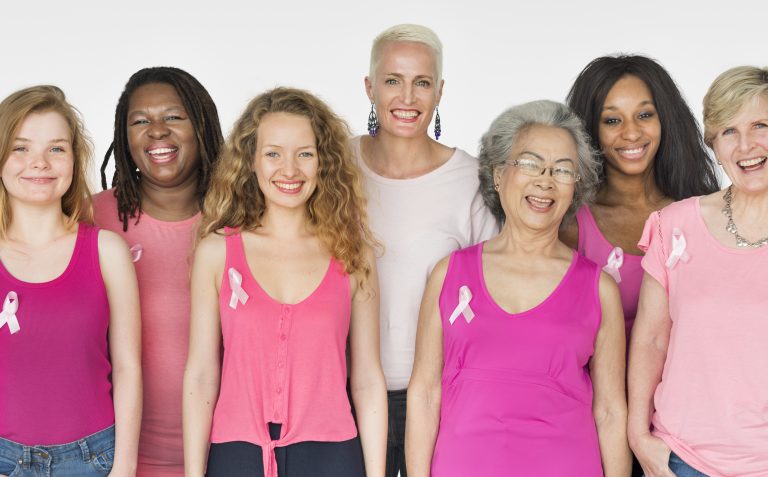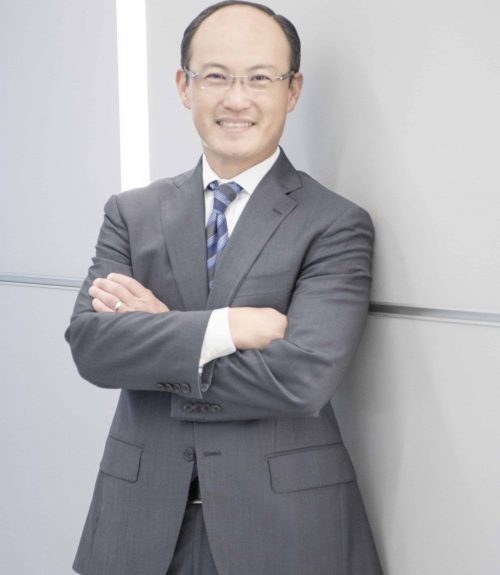The Plastic Surgery, Dermatology & Laser Center
Dr. Chang Soo Kim | Board Certified Plastic Surgeon






Rating: 4.9
Rating: 4.8
Rating: 4.6
Rating: 4.4
Rating: 4.9
Breast Reconstruction
Following a surgical procedure or breast cancer treatment, many women seek breast reconstruction to minimize evidence of surgery or to restore one or both breasts to a natural, healthy appearance. Whether a patient has undergone a mastectomy, lumpectomy, or seeks to correct congenital deformities, she should feel empowered and informed on the reconstruction options available to her. Breast reconstruction can include a variety of surgical procedures aimed at restoring one or both breasts to near normal shape, appearance, symmetry and size. Breast reconstruction is often performed in steps or stages with multiple surgeries. Reconstruction can be achieved with local tissue rearrangement, implant-based procedures, or tissue flap surgeries. If only one breast requires reconstruction, surgeries involving a lift, a reduction, or an implant can be done to the opposite breast to improve symmetry and to give the breasts an even and natural appearance.
Patients should be aware that the Women’s Health and Cancer Rights Act of 1998 requires group health plans to cover breast reconstruction after cancer surgery, including surgery on the opposite breast to improve symmetry. This also provides for additional surgery in the future if needed. In addition, studies show that following breast reconstruction, women report improved body image, sexuality and health-related quality of life.
Article: Zhong, Toni M.D., M.H.S.; et. al. A Comparison of Psychological Response, Body Image, Sexuality, and Quality of Life between Immediate and Delayed Autologous Tissue Breast Reconstruction: A Prospective Long-Term Outcome Study, Plastic and Reconstructive Surgery: October 2016 – Volume 138 – Issue 4 – p 772-780 doi: 10.1097/PRS.0000000000002536.

Candidates
There are a number of factors that Dr. Kim will take into consideration when deciding what type of reconstruction is appropriate for each patient’s needs. Each patient’s reconstruction needs will differ, based on factors such as the type of mastectomy or breast surgery performed, the status of a patient’s cancer treatments, any need for post-operative radiation, and the patient’s overall health, age and body type. Patients should have realistic expectations; although reconstruction will likely improve the appearance of the breast, the patient may still find an altered appearance, sensation or feel to the reconstructed breast.

Types of Procedure
Breast reconstruction may be performed in a hospital inpatient or outpatient setting. Surgery time can vary widely from one to six hours, depending on the procedures required. There are a number of procedures which may be involved in the reconstruction process. Dr. Kim will discuss these options with you and find the procedures best suited to your requirements and goals.
Local tissue rearrangement: This is a surgical procedure in which local breast tissue and fat are moved and reshaped to fill a space or defect, which may have formed after a large lumpectomy or a partial mastectomy. Often the nipple and areola are preserved in a local tissue rearrangement. In many ways, local tissue rearrangement is a similar procedure to breast reduction surgery, which has a very high patient satisfaction rate. Thousands of patients choose to have a breast reduction every year to improve musculoskeletal symptoms, posture, body proportions and breast appearance. The breast will often be smaller in size but will have a restored, fuller shape. An additional reduction surgery may be performed on the opposite breast in order to maintain symmetry.
Implant based reconstruction: Immediately after a mastectomy, breast implants may be placed under the skin to restore volume and fullness (direct to implant or single stage reconstruction). This implant is typically wrapped with a type of collagen matrix (known as acellular dermal matrix, or ADM) to help with healing and to support the implant. Depending on the patient’s type of mastectomy and desired final results, implant reconstruction may be performed in more than one stage. In those situations, tissue expanders (adjustable implants) are wrapped in the ADM and placed into the breast pocket at the time of mastectomy. Then over a period of weeks to months, the tissue expanders are slowly enlarged with saline to progressively stretch the skin to the desired size and shape. Eventually, a second surgery is done to exchange these tissue expanders for more long-term saline or silicone gel implants. The placement of permanent implants depends on patient healing and usually takes place after any additional cancer treatments are completed, such as chemotherapy or radiation. Implants and tissue expanders can be placed either on top of (pre-pectoral) or below (sub-pectoral) the chest muscle. Pre-pectoral implant placement is faster and often less painful for patients. However, sub-pectoral implant placement may be better for patients with thin skin.
A woman seeking breast reconstruction may find herself overwhelmed by the many types of breast implants available to her. She may find herself asking questions: What are the differences between saline and silicone implants? Which implants are best for me? Dr. Kim is experienced with all types of breast implants and will answer any questions you might have. During your consultation, he will discuss the advantages and disadvantages of each type of implant, so that you can make an informed decision on the implant best suited to your needs.
Saline implants are filled with a saltwater intravenous fluid. They are frequently used in breast surgery and have been available for decades. The advantages of saline implants include a smaller incision when placing the implant and no need for long-term follow up or implant monitoring. When saline implants leak, the sterile salt water is absorbed by the body. A leak in a saline implant will be obvious to the patient, as the affected breast will become smaller over a few days, so she will know to have her implants reevaluated by Dr. Kim. Some of the disadvantages of saline implants include a firmer feel and increased rippling.
Silicone implants are very popular implants for breast reconstruction, and there are many types available. The most common types of silicone implants used in breast surgery are smooth, round implants. The type of silicone gel within your implant can vary in consistency, based on the patient’s needs and preferences. Each type of silicone gel has advantages and disadvantages, which Dr. Kim will discuss with you. Traditional silicone implants have a thinner, softer gel while cohesive gel implants, commonly known as gummy bear implants, contain a more stable silicone. Gummy bear implants are firmer than traditional silicone gel implants, and this firmness results in less rippling. Some gummy bear implants are round, while others are teardrop-shaped to give the breast a more natural appearance. However, some women find that the teardrop-shaped implants provide less cleavage and upper fullness than desired. In addition, shaped implants require texturing on the surface of the implant that does not allow them to move inside the breast pocket as much as smooth implants. Textured implants are not being used as frequently because they are associated with a low risk for anaplastic large cell lymphoma (ALCL). There is no indication that smooth implants cause ALCL.
Flap-based reconstruction: Some women choose not to use implants for reconstruction. Other times, the mastectomy or radiation therapy does not leave enough tissue on the chest wall to cover and support a breast implant. In these cases, breast reconstruction usually requires a flap-based reconstruction. In a flap-based reconstruction, Dr. Kim will use either lower abdominal muscle, skin and fat (TRAM flap) or a muscle of the back (Latissimus muscle flap) to reconstruct the breast using the patient’s own tissue. Since many patients do not have enough natural tissue for breast reconstruction, flaps can be used in conjunction with implants to improve the appearance of a patient’s breast reconstruction. Flaps have the added benefit of using natural tissue, which can improve appearance. However, flap surgery is more complicated and often requires a more significant recovery time than implant reconstruction. Flap surgery also requires surgery on another part of the body besides the breast.
Additional Procedures
Additional procedures are available to improve the appearance of a completed breast reconstruction, regardless of the original technique. Often, fat transfer can be conducted to improve contours, fill depressions, or thicken the skin in areas where the mastectomy flaps are thin. Dr. Kim will also do fat transfer in areas of thin skin to hide implant rippling. Fat transfer is done as an outpatient surgery. The procedure involves a small amount of liposuction (usually from the abdomen, waistline or hips), purification of the liposuction fat, and reinjection into the reconstructed breast. Areas of fat injection are typically “overfilled” because some of the fat grafts will be absorbed over the first three months.
Nipples and areola can be reconstructed with a variety of techniques. The substance of the nipple can be raised from surrounding skin to make a small mound from a flap or can be taken as a graft from the opposite nipple. Areola can be grafted or tattooed to change the texture and color of the skin around the nipple.
Recovery
Breast reconstruction can be performed as outpatient surgery for local tissue rearrangements. More often, if a patient is having a mastectomy with implant, tissue expander or flap reconstruction, she will stay in the hospital for at least one night. Patients often have drains placed at the time of the breast reconstruction surgery which will be kept in place for one to two weeks after the surgery. These silicone drain tubes remove unwanted fluid to reduce swelling and risk for infection. After drain removal, women can slowly increase activity over the following six weeks.
CHANG SOO KIM, MD
Board Certified Plastic Surgeon
Drawing from his extensive surgical experience and academic training, Dr. Chang Soo Kim comprehensive cosmetic and reconstructive surgery. He also dedicates himself to each patient, providing personalized, uncompromised care.
Dr. Kim’s cosmetic surgery techniques enhance one’s natural beauty without appearing artificial or overdone. Committed to reconstructive surgery with best possible functional and cosmetic results, he is capable of tailoring surgery to a patient’s specific needs and expectations.
Board Certified by the American Board of Plastic Surgeon
Medical Degree, Yale School of Medicine
Plastic Surgery Residency, Yale- New Haven Hospital

Schedule a Consultation
for a Breast Reconstruction
To schedule a private consultation with Dr. CS Kim please call the office or request an appointment online. We welcome your visit.
2777 Summer Street, Suit 210, Stamford CT, 06905
Services for liposuction, laser liposuction, Bodytite and body contouring in Stamford CT and surrounding areas such as Greenwich, New Canaan, Norwalk, Westport, Darien, Wilton, Weston, Easton, Fairfield, Bridgeport, Trumbull, Ridgefield, Danbury, Monroe, Milford, Bedford, Armonk, Mt Kisco, Bedford Hills, Rye, Harrison, Mamaroneck, Larchmont, White Plains, Scarsdale, Westchester County, Fairfield County. Surgical and non-surgical treatment of diet resistant fat, pregnancy bulges, weight changes, loose skin, and loose muscle. Safe, effective, beautiful and dramatic transformations.